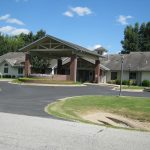The coming of age of the baby boomer generation has raised the issue of a potential senior housing shortage crisis. Now, a recent report seems to suggest that not only is a shortage a real possibility, but a strong contingent of baby boomers may not even be able to afford the kind of housing that is available. Nevertheless, where there is currently apprehension, Cambridge Realty Capital President Jeffrey Davis sees opportunity for operators who are willing to innovate in order to cater to middle-income seniors.
Experts predict that the number of middle-income seniors- those who are too wealthy to qualify for government subsidies but too poor to access high-end senior housing and private living and medical support- will swell by the year 2029. This and other findings are detailed in a new report entitled The Forgotten Middle: Middle Market Seniors Housing Study by the National Investment Center for Seniors Housing & Care (NIC).
The report projects that the average cost for a senior’s living expenses and care in 2029 will be $62,000. Yet, 54% of middle-income seniors will only have about $60,000 in annual resources to draw from to cover those costs. Translated into hard numbers, the report conjectures that approximately 7.8 million seniors will not have the means to join a private-pay facility or community. Moreover, this appears to be a conservative estimate, one that grows when considering other factors, such as annuitized assets, or the fact that many seniors will have multiple health issues and living limitations that will add even more to their overall cost of care.
While it sounds like an uncertain future for America’s seniors, Davis points out that there is still time to address this potential crisis with a shift in the type of product that is available on the market. “Developers will need to move away from the luxury and high-end senior housing market and toward more conservative and unique styles of living,” he states. Individual living spaces will need to be smaller and more efficient, and shared/communal spaces bigger and more multi-functional.
Co-living is another trend that is growing and which has the potential to solve a looming affordability crisis. Co-living communities have smaller personal living spaces (bedrooms and bathrooms) and more shared facilities (common living and recreation rooms and even kitchens). “There are many variations in business and operational models as well as living styles that can be pursued that will meet both the financial needs and the preferences of middle-income seniors,” Davis states. “There is definitely room for growth in this niche.”
The NIC-funded study was conducted by NORC at the University of Chicago and categorized participants by income cohorts. It also considered non-income factors such as level of cognitive impairment, limitations in mobility and chronic health conditions. The study was based on analysis of data from the Health and Retirement Study by the National Institute on Aging and supported by the Social Security Administration. The ongoing study uses a sample of 20,000 people and looks at a variety of factors related to aging, including income and healthcare needs.




